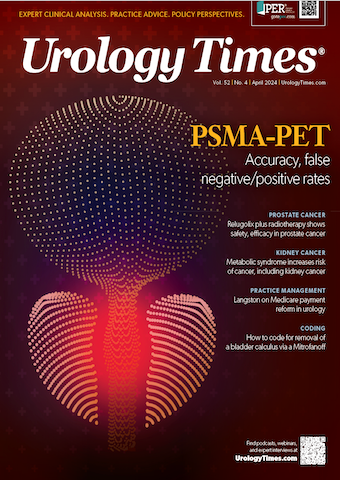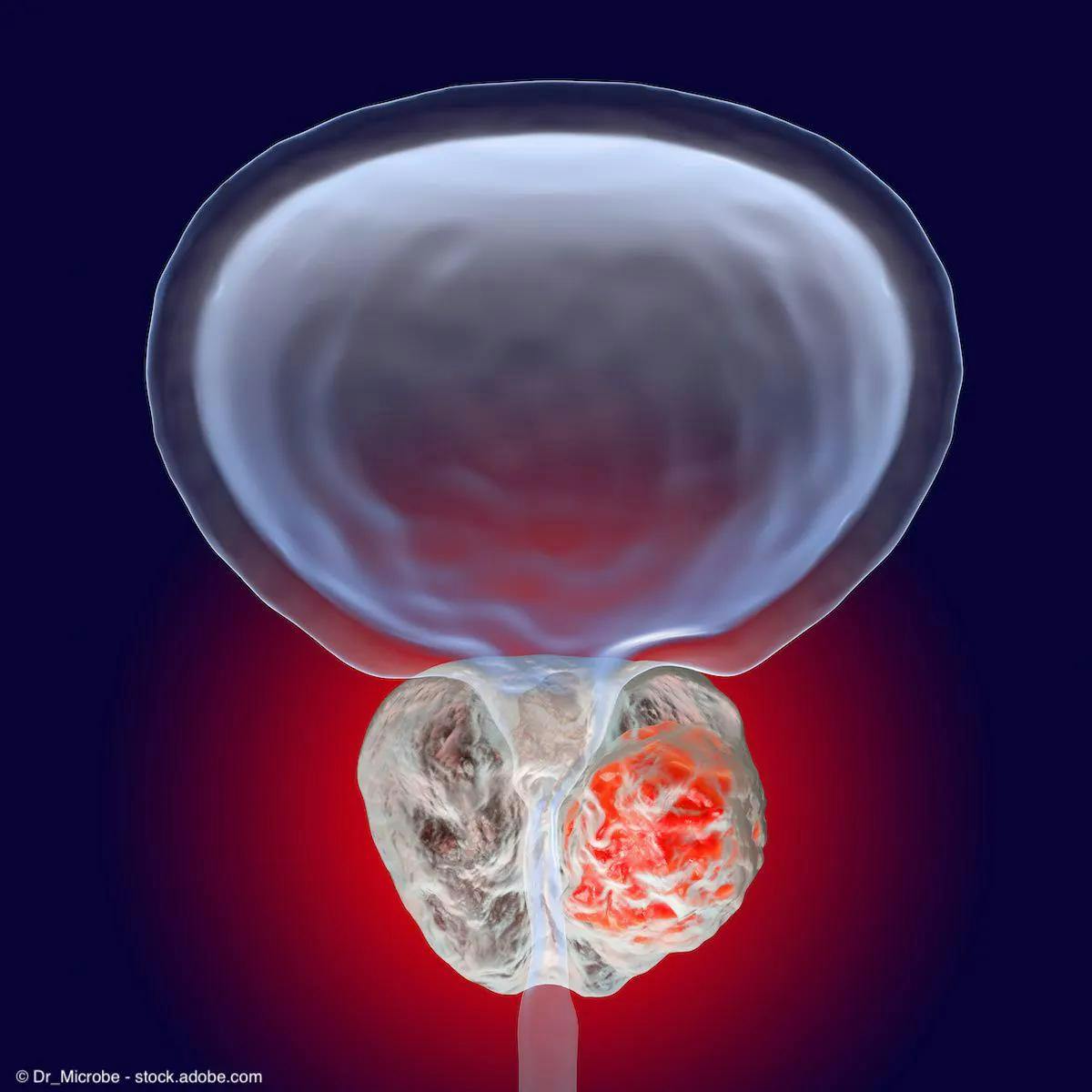Feature
Article
Urology Times Journal
Dr. Reiter discusses accuracy of PSMA-PET scans
Author(s):
In this interview, Robert Reiter, MD, MBA, discusses the accuracy of PSMA-PET scans, false negative and false positive rates, and how treatment with ADT affects PSMA uptake.
Robert Reiter, MD, MBA

Prostate-specific membrane antigen (PSMA)-PET imaging has proven to be disruptive technology in the detection of prostate cancer. In this interview, Robert Reiter, MD, MBA, discusses the accuracy of PSMA-PET scans, false negative and false positive rates, and how treatment with androgen deprivation therapy (ADT) affects PSMA uptake. Reiter is the Bing Professor of Urologic Oncology, chief of the division of urologic oncology, and director of University of California, Los Angeles’ prostate cancer program.
What would you say is the accuracy of PSMA-PET scans?
PSMA is, far and away, the most sensitive and specific prostate imaging agent that we have. It's highly accurate, but that doesn't necessarily mean it detects everything, because it does not. The detection, basically, is accurate in the sense that if something lights up on the scan, overwhelmingly, that indicates that there's prostate cancer in that location. But like anything, it's not absolute. We don't always talk about sensitivity; we talk about detection rates, and then, it depends on the clinical context. The first clinical context that PSMA was used to address was the setting of biochemical recurrence of men who had had surgery or radiation, their PSAs were rising, you know that they have disease somewhere, but don't know where it is. And so, most of the prospective studies, including the one that we did that led to FDA approval, basically enrolled patients and then looked at what's the likelihood of detecting cancer based on the PSA level. Generally speaking, below 0.2, the detection rate is very, very low. Between 0.2 and 0.5, it's about 40%. By the time you get to a PSA between 2 and 5, it's on the order of 90% or higher. But compared with conventional imaging, it's a dramatic improvement, because conventional imaging with a PSA of 0.2 to 0.5, maybe you would detect something in 5% of patients, if that - probably less. It has a very high detection rate and can be useful even with men with very low PSA levels.
Please discuss false negative rates and false positive rates with PSMA-PET.
False negative rates are a little bit hard to come by, if you think about it, because most men who are imaged with a rising PSA after primary therapy, if we don't detect something, you could say that's a false negative. The 60% of men who have a negative PSMA PET scan, but had a PSA between 0.2 and 0.5, I guess you could call those false negatives because they must have cancer somewhere and we're not seeing it. Those are probably just limitations of the technology. But I think probably the setting in which it's been studied best is men who do have a negative PSMA-PET scan or have a PSMA-PET scan and then undergo surgery. We do have some data on the sensitivity of PSMA for detection of lymph nodes at the time of surgery, and it's about 40%. That means that PSMA PET is only detecting positive lymph nodes in 40% of men who are found to have them after lymph node dissection. But it is important to note that this represents only the subset of men imaged by PSMA PET who undergo surgery. Patients, for instance, who are found to have involved multiple lymph nodes on PSMA PET are less likely to choose surgery.
What can cause a false positive on these scans?
False positives can absolutely happen. Overall, the specificity of PSMA-PET is probably 90% or so. But like any test, there are a few issues in terms of false positives. Number one is, there are actually false positive signals. The most common location for a false positive signal is in bone. They're generally exemplified by a very low uptake of the tracer in bone. The most common site of bone that's a false positive is the rib. Generally speaking, if the mean standard uptake value or the maximum standard uptake value is very low, let's say on the order of just above background, 1.5 or 2 or something like that, and the patient otherwise would not be anticipated to have metastatic disease, then it's a pretty good bet that that's a false positive. Whereas somebody who has a lesion in the rib, let's say, but very high SUV, is very unlikely to be a false positive. You can also get false positives from other tumors. There are other cancers that express PSMA, and they may be positive on imaging. We had a man, for instance, who had an incidental rectal cancer that was essentially picked up by PSMA-PET completely unexpectedly. There are some lung cancers that can sometimes express very low levels of PSMA and also be identified. We definitely do see false positives, and a lot of it is really about the expertise of the reader. Like with any imaging test, the more expertise, the more cases that an individual has read, the more likely the physician is to get an accurate reading, and have a pretty good sense of what's a false positive vs what's a true positive. Secondly, the context, so the patient's history, the Gleason score, and all the clinical details are very important also for assessing whether something's likely to be a true positive or a false positive.
When are some reasons for false positive scans?
I think the bone-related ones are the most common and oftentimes, on a CT scan in the same area, you'll see characteristics of a benign bone lesion - things like an enchondroma, or Paget's disease, that can sometimes express very low levels of PSMA. Inflammation also can again cause very low levels of PSMA that may be related simply to increase blood flow to that tissue, rather than any specific uptake. But again, they're generally characterized by very low uptake. And again, the context of the reading usually will indicate whether something is a true positive or not. Recently, I saw a patient who was initially read outside as having a lesion in the femur, which would certainly be a potential site for metastatic prostate cancer. But then when it was correlated with the CT scan and the finding of a sclerotic lesion with a rim around it, it was felt to be likely a benign bone lesion. And so initially, it was read as positive, but then when an expert read it, and then putting it all into the context of the patient, it didn't seem likely it would be a true positive until it was read as most likely a false positive. Ultimately, if you really want to know, sometimes you have to do a biopsy. We've had patients who have had low uptake in a lung lesion. I presented a case recently of a patient who had a recurrence, had a single lung lesion, very low uptake. We were really not sure in that case if it was a true positive; we biopsied it and it turned out to be a true positive.
Like all technologies, as the technology goes from being in the province of a small number of experts to the community at large, there's a significant learning curve. We had the same thing with MRI of the prostate. Now, we have the issue, I think, to a lesser extent with PSMA-PET because it's very quantitative; that's the beauty of it. But nevertheless, expertise remains important, particularly in these cases where the uptake is low and it's questionable. For instance, if you find uptake in the inguinal lymph node—a very uncommon site of metastasis in prostate cancer, and yet we do see that, less with PSMA than other PET tracers; it's more likely to be a false positive simply because if you know the disease, it's unlikely to be positive in that node unless somebody has otherwise pretty widely metastatic disease. At the end of the day, the clinical context cannot be replaced.
How do you resolve these false positive readings?
You can always consider doing a biopsy to rule in or out whether something's cancer. Another thing that we commonly might do is we might just observe the patient and then repeat the scan, because if on repeat, the signal is more intense, then you know it's likely a true positive. The other scenario, which we've rarely done, but one could do, is treat the patient with androgen deprivation therapy, because testosterone regulates PSMA expression. So if you treated somebody, then waited a couple of months and repeated the scan, if it's real, the signal should be diminished; the patient's PSA should go down, the signal should diminish, and then you know that was a true positive. We sometimes do try things like that, rather than trying to do a biopsy, because biopsies also have false negative rates, especially in bone. Even in the most experienced of hands, the sensitivity or the accuracy is probably about 60%.
How would you say that treatment, especially ADT, affects PSMA uptake?
Androgens and the androgen receptor regulate PSMA expression, and also regulate tumor growth. So if you treat somebody with ADT, and they respond, you should see within a few months a decrease in the presence or the uptake of PSMA on a PET scan. So certainly, it can be a measured response. I have a patient who was on 6 months of ADT prior to surgery as part of a clinical trial. We repeated his PSMA scan right before the surgery, and all of the signal was gone. He actually ended up having a complete pathological response, which is rare, but he was the outlier type of patient. If you repeat the scan too soon, though, short term, there's actually a negative regulation of PSMA by androgen. If you scan somebody and then rescan them within a couple of weeks of starting ADT, you might actually see an increase in the signal before you see a decrease. Timing is really critical for that question. There's not generally too many reasons to repeat a PET scan within a week or 2. Some people are asking if you did that, and then you treat it with Pluvicto [Lutetium (177Lu) vipivotide tetraxetan], that maybe you could increase the response rate because you increase PSMA presence and expression and then treat with drug. That has not yet been borne out in a clinical trial, but some people are trying to use this kind of regulatory pathway as a means to explore that concept at least.

























